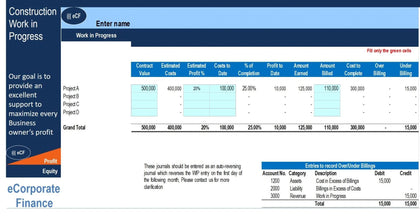Car Wash Tunnel or Multiple Bay Startup Financial Model
Latest Updates: monthly and annual three statement model added as well as a capitalization table.
Video Tutorial:
A recent update was added to show average profit per car as well as a visual therin.
A car wash tunnel or car wash bays can be a great investment with the right financial planning and careful management. This financial model tries to give a potential startup operator as much logic as possible to create a 5-year monthly and annual projection of the equity requirements and potential performance of such a business.
Oftentimes a car wash is going to be seasonal, so above all else, this logic was built-in so the user can easily define busier months and slower months. This is more important in the early stages of the business when cash flow is tight.
The model has a simple layout. The first tab is for startup costs, funding sources, and the start date of the project and the lead time before revenue starts.
The next tab is for operating costs. They are set up to scale with the car counts. The following can be defined in each of the 5 years per car:
Electricity
Natural Gas
Water
Detergents
Claims
Repair & Maintenance
Other fixed costs can be defined per year as a dollar value:
Site Labor
Office Labor
Marketing
Accounting
Insurance
Other Fees
Management
Rent
Property Tax
Other Fixed Costs 1
Other Fixed Costs 2
Other Fixed Costs 3
Other Fixed Costs 4
Other Fixed Costs 5
The next tab is for revenue. It starts off by defining year 1 expected car count and the percentage that grows each year. There is then up to 6 wash types where the user defines the price of each, the percentage of cars falling into each wash type per year, and the average number of minutes each wash type takes (in order to run logic tests to make sure assumptions are reasonable/possible).
There is a simulation where the user can choose a given projected year and based on the assumptions, a monthly summary will display for 12 months to show seasonality. The following are displayed:
% of Yearly Volume in each Month
Year 1 Expected Monthly Car Count
Avg. Cars per Day per Location
Avg. Cars per Hour per Location
Actual Expected Minutes per Car
% of Max Capacity Used
Further inputs for revenue include:
Days Open per Month
Hours Open per Day
# of Locations
The next area is for potential exit of the business and in this case the user has the option to determine:
Valuation Method
EBITDA Multiple
% of Sales
Exit Date if Applicable
Final output summaries include a monthly and annual pro-forma detail, executive summary of high level financial line items, visualizations, and a contribution / distribution summary that includes IRR and DCF Analysis.






































